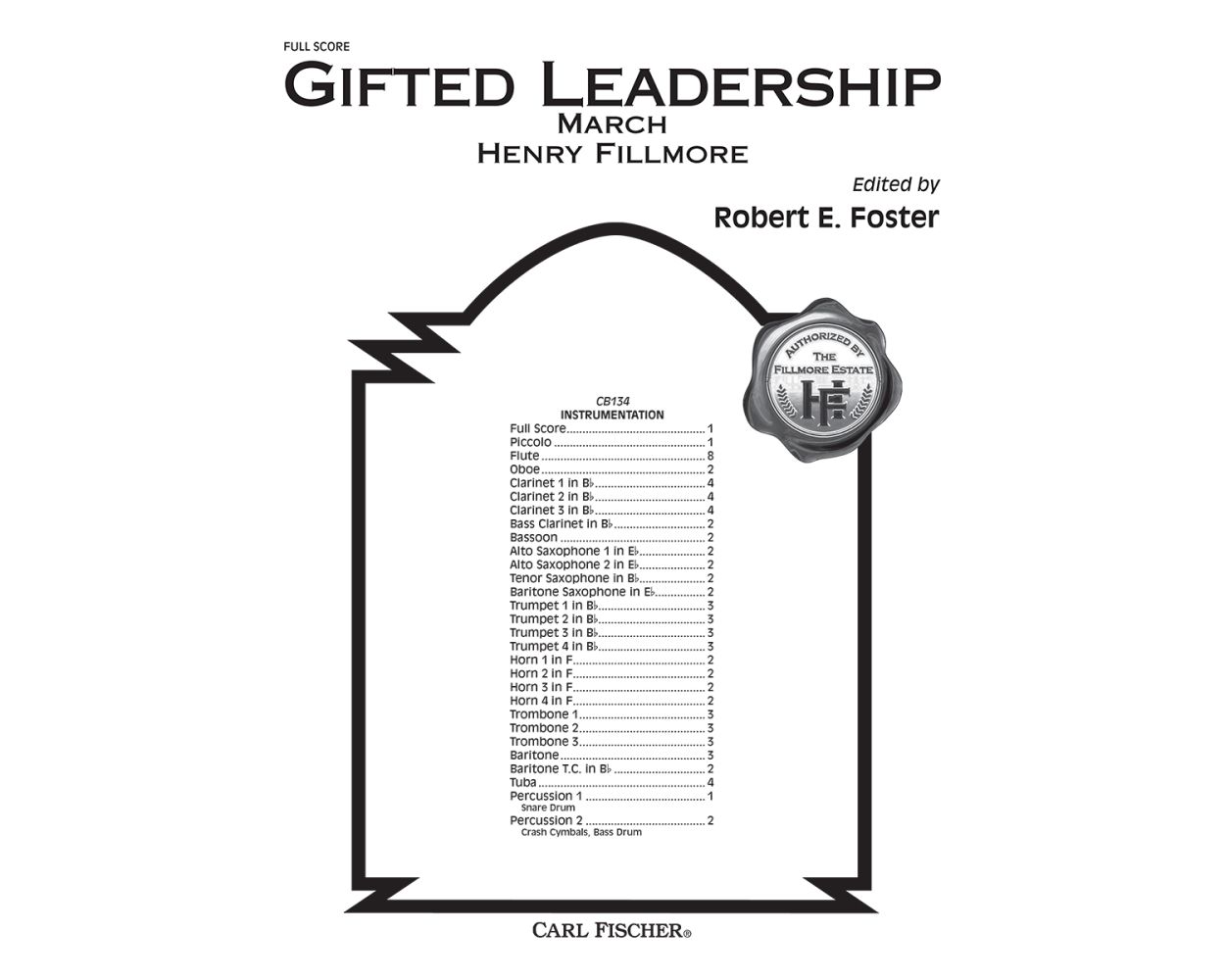Results
-
 £74.99
£74.99Stand By Me - Jerry Leiber, Mike Stoller & Ben E. King - Frank Bernaerts
Estimated dispatch 10-14 working days
-
 £42.00
£42.00Wolverine Trail - Matthew Putnam
Matthew Putnam'sWolverine Trailis a concert march for beginning bands and is perfect for introducing beginners to the march form and style. This piece is based in the key of E flat major and uses only the first seven notes taught in most method books. It is also rhythmically accessible to beginners, with eighth-note combinations being the most difficult rhythms. This piece follows standard march form except that is does not modulate at the trio section.
Estimated dispatch 12-14 working days
-
 £72.00
£72.00Gifted Leadership (March) - Henry Fillmore
Gifted Leadership is a most interesting march with some unique scoring that sets it apart from many more ordinary marches. The woodwind parts are especially intriguing, with much more variety and independence than is frequently found in a traditional march. Fillmore wrote this march to honor the leadership of famed band leader and cornet soloist Frank Simon. It is authentically presented here as Fillmore intended, carefully edited by Robert E. Foster.
Estimated dispatch 12-14 working days
-
 £49.00
£49.00Kinetic Energy
Kinetic energy is defined as the energy of constant motion. Larry Clark represents this idea with a near constant 8th-note pulse throughout his supercharged piece. Though the piece ends in B flat major, the main idea is in the Lydian mode on E flat. Kinetic Energy is Clark at his most incisive and the scoring is apt and colorful.
Estimated dispatch 12-14 working days
-
 £72.00
£72.00Miami - Henry Fillmore
This classic march (authentic edition by Robert E. Foster) maintains the integrity of the original transcription by Henry Fillmore. It was written for the people of Fillmore's second home "Miami".
Estimated dispatch 12-14 working days
-
 £72.00
£72.00Golden Friendships - Henry Fillmore
This classic march, edited by Robert E. Foster, maintains the integrity of the original piece by Henry Fillmore. Fillmore considered Golden Friendships one of his best marches. Carl Fischer Music is proud to revive this exceptional march that has not seen the recognition that it truly deserves.
Estimated dispatch 12-14 working days
-
 £72.00
£72.00(We're) Men Of Florida - Henry Fillmore
An authentic edition by Robert E. Foster, this classic march maintains the integrity of the original work by Henry Fillmore. Written for the University of Florida band, this piece was actually dedicated to all Floridians. Fillmore was known throughout Florida as "Uncle Henry" and he was instrumental in the development of band programs throughout the state. A great tune!
Estimated dispatch 12-14 working days
-
 £49.00
£49.00Air and Caprice
Perfectly scored for younger players, Air and Caprice is a classically balanced piece in two distinct tempos (Adagio and Allegro), with nicely related but contrasting musical materials. It will be an excellent choice for concert and contest performance. Duration: 3'25" Key: F Ranges: Trumpet - E; Horn - C; Trombone - D
Estimated dispatch 12-14 working days
-
 £57.00
£57.00Christmas Variations
"We Wish You a Merry Christmas" never had it so good as it does in this cleverly put together set of contrasting variations. From the broad, moderate opening through the warm and reflective central Andante, to the tongue-in-cheek "Tempo de Beguine," Mr. Balent has created several delightfully fresh versions of a familiar carol. Duration: 4' Keys: F, F Minor Ranges: Trumpet - A; Horn - E; Trombone - F
Estimated dispatch 12-14 working days
-
 £57.00
£57.00Festive Dances
Robert Thurston's enormously attractive writing for band and his sure command of contemporary harmonic and rhythmic devices give this three movement composition by terrific band and audience appeal. Thurston's fondness for mixed meters will keep players on their toes. The 2nd movement (moderato) in particular has a memorable folk-like lilt and charm. The whole piece is bound together by the use of the motto C-E-C, the initials of the composer's teacher, the late great band writer Charles E. Carter, in whose memory Festive Dances was written. Duration: 7'
Estimated dispatch 12-14 working days
